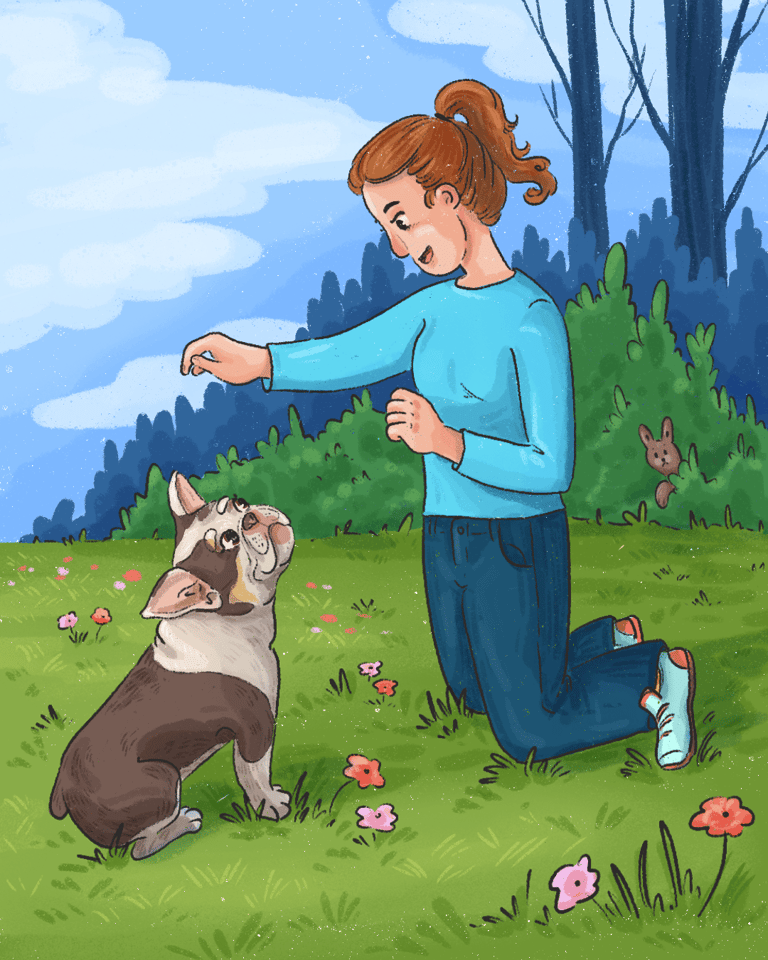Marker Training
What are Markers and why are they important?
Through marked words we can ‘pre reward’ so they get the feedback they need on their behaviour as fast as possible. This is then reinforced by the appropriate reward. This is what we call a marker and it's a vital tool in communicating with your dog.
Making your markers.
Place them in sit, facing you. Standing or crouching is fine but avoid letting them take over your space by having strong posture and being taller than them. This is not to intimidate them but to keep away from escalation.
Say your marker word Yes in an upbeat way
Reward within 2 seconds to give a positive association2
Repeat
Using the above method you can ‘charge’ a word to have a positive association and how intense that is depends on how far you enforce this.
Using your markers.
This is going to seem simple and it is, but it is the cornerstone of everything we do. If you can master this the rest is easy, as all training is essentially this process used in many different ways.
(optional) Say your trigger word e.g. Sit and use your chosen hand signal.
Positive behaviour
Mark the behaviour with your marker word Yes! immediately (pre reward)
Reward
An example would be your dog dropping their ball on a vocal command which you would mark with “Yes”. The reward could be the game continuing or a high value treat.
Engagement on lead
This is the precursor to all lead work and walking outside of the house. We have found that some owners go straight to taking their dogs for walks without training them how to walk beforehand by practising at home. As a rule, dogs aren't great at generalisation so what is taught in one space might not work elsewhere because they haven't made that link yet. The big BUT here is that they will pick it up more quickly in the second space because they already did it in the first one.
Place your dog on the lead
Have them sit by your side using treats to engage their attention
Reward them for being by your side (This is a high value place to be)
Start walking and use your lure to get them to walk alongside you
Correct by slightly tugging on the lead. This is just to communicate that they aren't where they are supposed to be.
If this is uncomfortable for them, then your collar and harness need to be reassessed.
Continue to reward when they are engaged with you and by your side.
Occasionally stop and put them in a sit at your side again while rewarding.
Repeat steps 4-7 or end on a big reward
Engagement


The first progression we would make from simply setting the marked words is to get engagement from your dog. Are they engaging with you (making eye contact, or checking in with you frequently to look for direction) or does something else more exciting have all of their attention? If they aren't engaging with you they won't be listening, so any training you do will be correction based to start with. You want to set them up for a win so start with engagement, and even when you move on to more advanced training starting with a warm up of simple engagement exercises can supercharge your session.
Some dogs will naturally be very engaged whereas others are less so. We will now outline how we can build this engagement from nothing. Unless you are reading this for your puppy, they will already have some form of engagement we can shape and improve.
Using a lure, get them to follow your hand. A good way to do this is with either a treat or a rope toy. While standing, get them to follow your hand from your left side to right and back again.
Periodically reward them so they stay engaged with the game, and use a happy and excited tone of voice when praising them.
You can progress from this to adding in commands like sit, here and touch.
Doing this for 5-10 mins before a walk or training session can encourage them to be in the right mindset and know what they need to do.
Find my face
At this stage your dog is learning how fun it is to play follow the hand whether it's to sit or just around a room. By adding a session or two each time you are training you will teach them to check in with you when they want something, or when they are unsure of what to do. This will be reinforced in the impulse control section.
Start by doing your normal engagement session as above.
Stand up straight so the treat is out of reach held in your closed hand
Turn so you are facing the opposite direction
We want your dog to come around and make eye contact with you
As soon as they do mark the behaviour
Reward with the treat
With repetition they will get quicker to find your face each time. You can also progress to them sitting in front of you making direct eye contact and then adding a wait until you give the treat, but it's up to you how far you push this. We recommend at least until they are quick about sitting in front of you making eye contact, as this will hugely help with recall.




